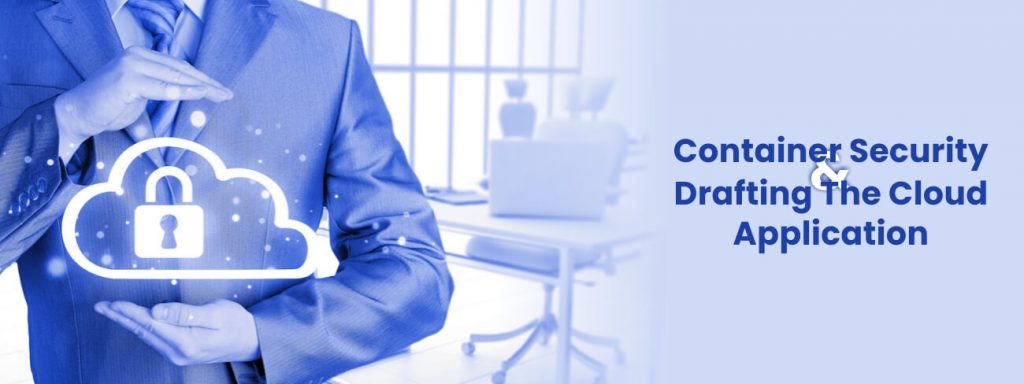Over the years, technologies have improved the ways to build systems, this result in significant evolution of the infrastructure. There are many new technologies had come in the modern era in which legacy has also been included. It doesn’t always mesh well. The new technology solutions have created anillusionbetween past and future on how things are secured.
Organizations are pacing workloads to public cloud platforms, such as Amazon’s AWS, Google Kubernetes, and Microsoft’s Azure, increasing the demand for InfoSec, which must protect these new environments. New architectures like microservices and serverless are increasing complexity. Complexity is the biggest enemy of security. To be effectively aligned with adoption of these technologies, a new approach to security is required that does not depend on shifting infrastructure as the control point.
Container security
A new shipping container is a box that has been designed to carry different types of transport, including ships, trains, and trucks. The intention of an application container is very similar to the shipping container. It’s a way of packaging an application so that it can be moved around and run on different computer systems.
Containers are gaining popularity due to its fast and efficiency use. Security is important for virtual machines, which helps in securing containers. Containers run on a shared host and typically use multiple components to deliver a complete solution. Securing the containers without securing the host is like making a strong building on quicksand and vice versa. But leaving them all is like the open door with a big sign out front that says “Please rob me, thank you.”
Container IP challenges
Server or system administrator has limited control in the cloud interface. Cloud-native technologies are invisible to the traditional security perimeter, it can control such as filtering with IP addresses and ACLs on firewalls which are no longer effective in the modern security solution. The new and dynamic architecture nullify the existing cloud security approach.
Access control list get so complex that it become impossible to manage, it hammers the host performance. Layer 4 is link with the network topology. It lacks in support of agile applications. Network Address Translation (NAT) eliminates end-to-end visibility, which adds the second wrinkle to connections. Therefore, IP identification leaves the system administrators blindfolded. Nowadayssystem and server administration have only two options; either trust the network to do its job without having any control over it or introduce a new approach for resource identification and control that is less reliant on IP addresses.
Container Automation Security
One the most uniqueway of containers development to deployment is speed. The development process is rapid and is divided into multiple, bite-sized components are constantly updated. Frequent updates and ephemeral workloads make it a challenge to lock down any environment. During development, security scanning of container images needs to be automated.
The containers may preform different behaviors depending on the application payload and the context in which they operate. Taking a same approach for all containers won’t work. It will not seta static policy at the time the application is launched, because updates will not be taken into account, and frequent updates will be there. It’s impossible to fully trust on developers to define the security parameters. Developers can neither retain the skills nor the time to do that, certainly not when images are constantly updated.
The automated blocking of suspicious activities in the security world in general is moving from detection to automated prevention. With containers this changes is even more critical, knowing that container X has run a privilege-escalation attack and has successfully obtained root privileges on the host is useful only in hindsight. It must prevent before it’s too late to handle.
Host Security
Containers producing application should be treated in the same way as other deployment when it comes to security. Inside the container is software that may have vulnerabilities; although this might not grant access to the underlying OS of the server, there still may be issues such as denial of service that could disable a container and therefore knock a website offline. It’s also important not to forget the security of the server hosting the containers.
The host is the most important part of the container that needs security, since an attacker could easily gain access to everything through it. Thecontainer host needs to be properly secured using least access privilege, patching of vulnerabilities, and hardening of the system. As container host which is not secure, makes all the containers running on the host vulnerable to attack from the outside and from each other.
Cloud hosting is best security style of container hosting. When things started moving towards the cloud there was a lot of fear related to this new technology, as businesses couldn’t part with the idea of not having their data and storage in-house.
Cloud hosting actually has an additional layer of security. The physical security measures to protect the physical datacenter from being hacked, or harmed. Next layer of security is the physical server itself. Finally, with cloud hosting an additional layer of security that protects the virtual network of cloud hosting environment.
To hold the benefits of application disaggregation and cloud-native applications must be changed to establish a unique application identity for the resource. This requires both technical and mindset changes. The old way of using the network as a security control point is not only operationally challenging but also a security hazard. The combination of application identity with distributed policy enforcement model creates a security paradigm that efficiently implements uniform security across any infrastructure at scale.















